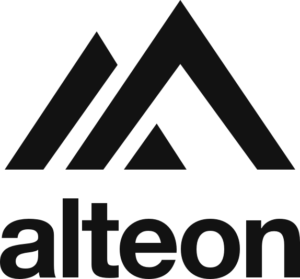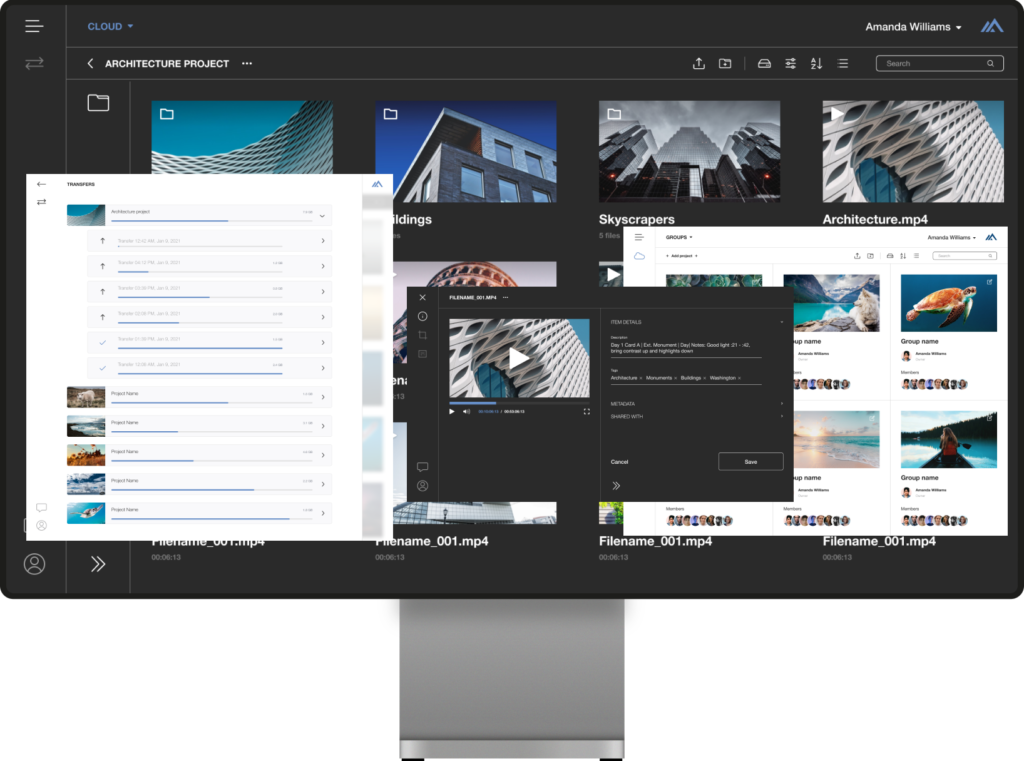
Alteon: Fixing Systemic M&E Industry Issues
Matt Cimaglia, co-founder of New York–based Alteon, sees the media and entertainment industry struggling with the same problems over and over again: expensive storage, difficulty moving assets reliably and an overall lack of organizational structures.
The solution: a single go-to ecosystem that combines high-speed file transfer and cloud-based media management with long-term storage.
Cimaglia spoke with MESA about his company’s approach to industry-wide problems, how Alteon helps content creators avoid ad hoc solutions and inefficient workflows, and what it’s going to take to bridge the divide between technological advancements and the workflows that haven’t caught up to them.
 MESA: How did Alteon first come on the scene? What gap in the media and entertainment space has it sought to fill?
MESA: How did Alteon first come on the scene? What gap in the media and entertainment space has it sought to fill?
Cimaglia: Having spent more than 20 years as an editor, producer and entrepreneur in the production industry, I saw the same pain points coming up every month for my business. Delivering large assets to clients was cumbersome and storage costs kept rising for assets we only needed in our archives.
When I worked with large ad agencies, I was struck by how disorganized their digital asset management was.
I conceived of Alteon as a solution to those problems.
I wanted to build a single platform that would help independent freelancers, small to mid-sized companies, in-house brand teams and social media influencers work together more seamlessly, making assets easily accessible and file transfer intuitive.
MESA: When visitors see alteon.io, the first thing they see is that it is “powering a new production ecosystem.” How is it accomplishing that?
Cimaglia: The production industry has lots of excellent platforms available — but few of them interact well with each other, or else they are prohibitively expensive for individuals. This results in ad hoc solutions and inefficient workflows, especially for independent freelancers, who are really the driving force behind the industry.
Our goal is to be a comprehensive ecosystem that addresses these issues and more. We use the term “ecosystem” to describe Alteon, because it really is a network of tools that work seamlessly together and integrate with commonly used products like Adobe Premiere Pro. Right now, we have Alteon Cloud, our storage and file-transfer platform, and Alteon Ideation, powered by Bluescape, which will launch by October.
We have plans for several other environments to launch early next year.
MESA: AI, cloud technology, visual collaboration: Alteon’s offerings run the gamut in this industry. How has this ecosystem advanced solutions for M&E overall?
 Cimaglia: A lot of great tools exist that address these systemic problems in the production industry — but they aren’t under one roof. As an example, one of our partners, Vidispine, makes a truly world-class tool for digital asset management that’s used by broadcasters and studios around the world, but freelancers don’t have easy access to it. By partnering with them and folding their technology into Alteon Cloud, we’re able to offer a somewhat scaled-down version of their tool in a broader ecosystem, which simplifies workflows.
Cimaglia: A lot of great tools exist that address these systemic problems in the production industry — but they aren’t under one roof. As an example, one of our partners, Vidispine, makes a truly world-class tool for digital asset management that’s used by broadcasters and studios around the world, but freelancers don’t have easy access to it. By partnering with them and folding their technology into Alteon Cloud, we’re able to offer a somewhat scaled-down version of their tool in a broader ecosystem, which simplifies workflows.
This is a common theme for Alteon. The technology exists that can solve many of the problems I’ve outlined above, but often the technology is built for large enterprises, rather than independent filmmakers, small agencies or other mainstream content creators. By partnering with companies like Bluescape, Vidispine, IBM and Teradek, we’re able to offer something truly unique — and at a fraction of what these tools would cost otherwise.
By combining these tools into one single ecosystem, we’re not just bundling them more affordably, but also, in some cases, reducing the need for large IT teams to help run the tools themselves.
MESA: What are some of these companies partnering with Alteon?
Cimaglia: We currently have formal business partnerships with several companies. IBM is our cloud provider, and IBM Aspera also fuels our high-speed upload and file transfer service.
We collaborate with Vidispine for APIs that drive our digital asset management backend.
Bluescape powers Alteon Ideation, our visual collaboration tool, and we’re collaborating with Adobe to build and promote our Alteon extension for Adobe Premiere Pro, so editors can work off files straight from the cloud.
We’re also close to linking Alteon Cloud with Teradek, so film sets can upload up to 4K HDR files to the cloud in real-time, which will be a game-changer for how remote production teams handle dailies.
 MESA: How have Alteon users reacted to the platform?
MESA: How have Alteon users reacted to the platform?
Cimaglia: The response has been overwhelmingly positive so far. One user loved how Alteon Cloud immediately transcoded files — they used to do this on multiple machines in an office, but now it’s handled automatically. That’s a core component to Alteon Cloud. Several other users have migrated their workflows to us specifically because they used to rely on hard drives, and during the pandemic, many of those drives would be trapped in offices, so to speak.
I’ve been working on Alteon long before the pandemic began, but the shift to remote work has accelerated our value proposition.
MESA: What’s next for Alteon?
Cimaglia: We’re growing significantly in the coming months. We’re adding new functionality to Alteon Cloud every week, with AI metadata tagging and audio transcription coming later this year.
We’re also expanding the Alteon ecosystem next year with tools to get creators paid faster and find work more quickly.
These problems are systemic in the industry, partly because workflows haven’t caught up to the reality of technological advancements in the media and entertainment space, especially hardware and internet speeds. Our path forward hinges on bridging that divide.
As we accomplish that for more and more users, and continue expanding our offering, we will be able to help more creators worry less about administrative busywork and focus more on the work they love.
